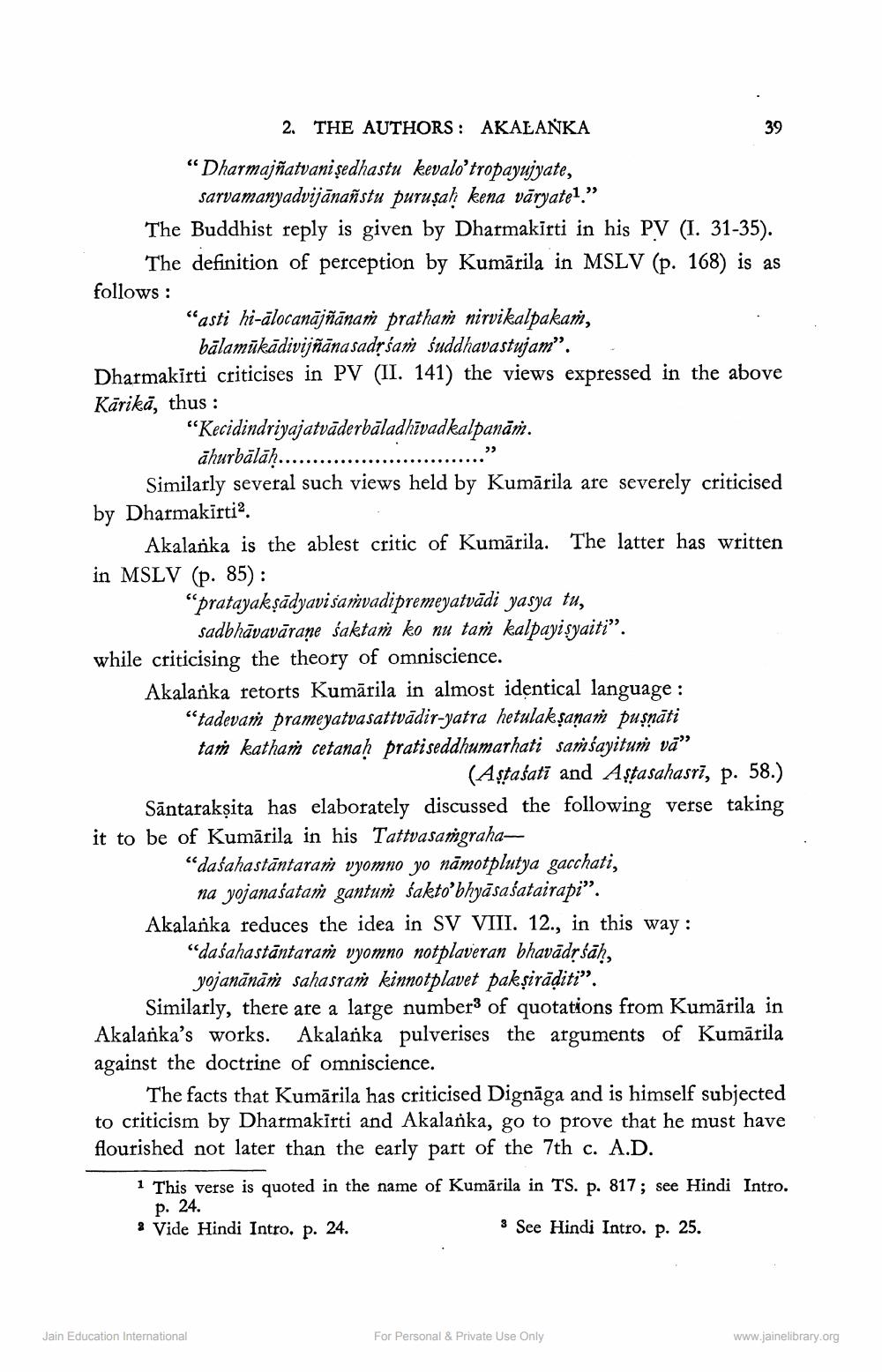________________
2. THE AUTHORS: AKALANKA
"Dharmajñatvani şedhastu kevalo'tropayujyate, sarvamanyadvijānañstu puruṣaḥ kena vāryate1."
The Buddhist reply is given by Dharmakirti in his PV (I. 31-35). The definition of perception by Kumārila in MSLV (p. 168) is as
follows:
39
"asti hi-ālocanājñānaṁ prathaṁ nirvikalpakaṁ, bālamākādivijñānasadṛśam śuddhavastujam".
Dharmakirti criticises in PV (II. 141) the views expressed in the above Kärikā, thus:
"Kecidindriyajatvāderbāladhīvadkalpanāṁ.
ähurbālāḥ.
Similarly several such views held by Kumārila are severely criticised by Dharmakirti2.
Akalanka is the ablest critic of Kumarila. The latter has written in MSLV (p. 85):
"pratayakṣadyavi samvadipremeyatvādi yasya tu,
sadbhavavārane saktam ko nu tam kalpayiṣyaiti". while criticising the theory of omniscience.
Akalanka retorts Kumārila in almost identical language: "tadevam prameyatvasattvadir-yatra hetulakṣaṇam puṣṇāti tam katham cetanaḥ pratiseddhumarhati samśayitum vā” (Astasati and Aṣṭasahasri, p. 58.) Santarakṣita has elaborately discussed the following verse taking
it to be of Kumārila in his Tattvasamgraha
"dasahastantaram vyomno yo nāmotplutya gacchati, na yojanaśatam gantum sakto'bhyasaŝatairapi".
Akalanka reduces the idea in SV VIII. 12., in this way: "dasahastantaram vyomno notplaveran bhavādṛśaḥ, yojanānāṁ sahasraṁ kinnotplavet pakṣirāḍiti".
Similarly, there are a large numbers of quotations from Kumārila in Akalanka's works. Akalanka pulverises the arguments of Kumārila against the doctrine of omniscience.
The facts that Kumārila has criticised Dignaga and is himself subjected to criticism by Dharmakirti and Akalanka, go to prove that he must have flourished not later than the early part of the 7th c. A.D.
Jain Education International
1 This verse is quoted in the name of Kumārila in TS. p. 817; see Hindi Intro. P. 24.
2 Vide Hindi Intro. p. 24.
3 See Hindi Intro. p. 25.
For Personal & Private Use Only
www.jainelibrary.org




